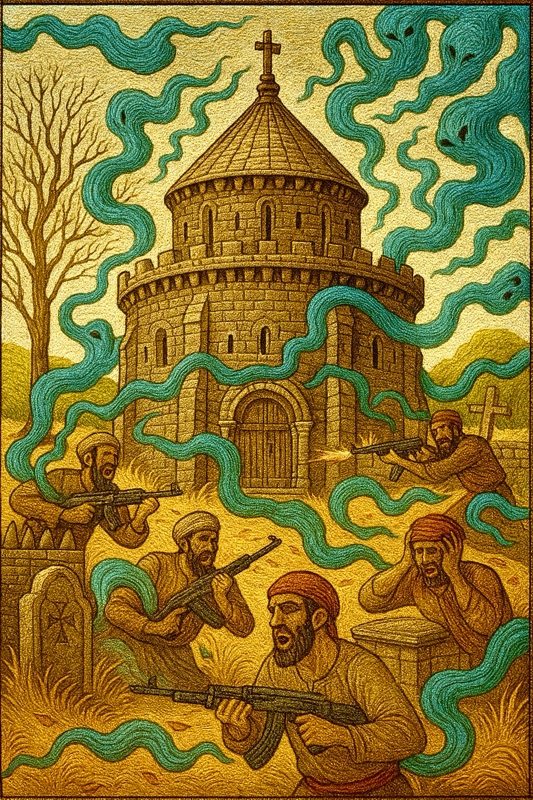Ghost Stories of the Knights Templar: The Curse of Kapell Sion
Hidden deep in the forests of Eastern Europe stood an ancient stone chapel, known only to the villagers as Kapell Sion. For more than three centuries it had kept its vigil, built by returning warrior-monks of the Knights Templar. Its round walls mirrored the Holy Sepulchre in Jerusalem, its altar aligned with the rising eastern star. Beneath its floor were hidden weapons—axes, maces, swords—consecrated with blood and prayer.
Above its doorway, carved in Hebrew, was the warning:
“Let not the blood of innocents be spilled here.
If it is, the Knights of the Temple shall rise.
They shall bear the invisible sword,
and the vengeance of God shall fall upon the wicked.”
 For generations the villagers guarded this place in reverence. But peace ended when waves of refugees arrived. At first, the people of the village gave them food and shelter. Yet soon armed young men forced their way into homes, stripped crosses from walls, and declared Sharia law. To resist was mocked as hatred. Christianity itself was silenced.
For generations the villagers guarded this place in reverence. But peace ended when waves of refugees arrived. At first, the people of the village gave them food and shelter. Yet soon armed young men forced their way into homes, stripped crosses from walls, and declared Sharia law. To resist was mocked as hatred. Christianity itself was silenced.
One night, the men herded a group of villagers into Kapell Sion. At their feet they threw a battered icon of Christ.
“Spit, trample, renounce—or die.”
One by one, trembling captives obeyed. Until a girl of sixteen stepped forward. Her name was Vera. Instead of spitting, she knelt, kissed the image, and gently wiped it clean.

The commander’s pistol thundered. Her blood spattered across the face of Christ. She fell lifeless upon the icon, staining it crimson. The men laughed as they left, desecrating the sacred house.
But at midnight, the air grew cold. From the stone walls of Kapell Sion, shadows stirred. Ghostly Templar knights stepped forth, armor rattling like thunder, eyes burning with pale fire. Sworn centuries ago to defend the innocent, they unsheathed their spectral blades and marched into the village.

By dawn, every blasphemer was dead. The streets lay littered with broken bodies, cut down by weapons no living hand had wielded. Machine guns lay scattered in the dirt, useless against vengeance long sworn.

When the villagers returned to Kapell Sion, Vera’s body was gone. In her place, upon the altar, lay a single Templar sword. Its steel glowed faintly as if lit from within. Etched into the blade was one word in crimson fire:
FAITH.
And so it was remembered that in Swedish, Havea means faith. A reminder that Vera’s spirit—her courage, her sacrifice—would forever bind Kapell Sion to the eternal oath of the Templar dead.
—————-/ The End /—————

Comments
Post a Comment